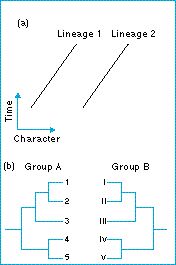Coevolution - What is coevolution?

Coadaptation does not necessarily mean coevolution
The ancestors of Glaucopsyche lygdamus might have evolved their Newcomer's organs for some other reason than feeding Formica and the ants might have evolved anti-wasp behavior patterns for some other reason than defending caterpillars; when the two came together they were coadapted. To demonstrate coevolution, Pierce and Janzen contend, it is not enough just to show that two forms are coadapted: we must also look at their evolutionary history, to see whether their ancestors evolved together, and exerted selective forces on each other.
That is a tall order. In practice, biologists tend to assume that interspecific coadaptations are due to a long history of coevolution unless a convincing alternative hypothesis can be put forward. Further evidence that a coadapted system arose by coevolution can come from comparison with related species: two lineages may well have mutually influenced each other's evolution if they have speciated together, as in the figure opposite.
Indeed, the relation between Glaucopsyche lygdamus and Formica is not unique. Lycaenids and ants have evolved a large number of relationships in different species and this suggests the two groups have been evolving together for some time.
Figure: coevolution means that two separate lineages mutually influence each other's evolution. The two lineages tend to (a) change together and (b) speciate together. Lineages 1 and 2 could be, for example, an ant lineage and a lycaenid butterfly lineage.
| Next |



